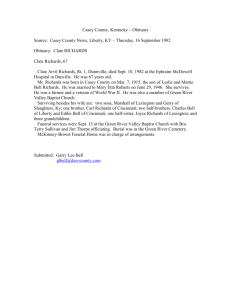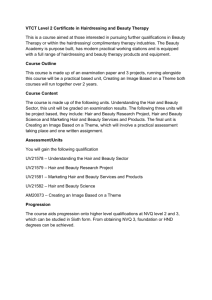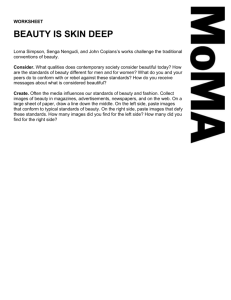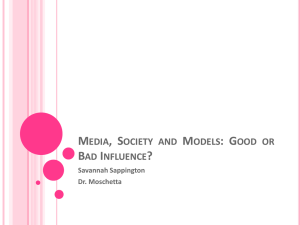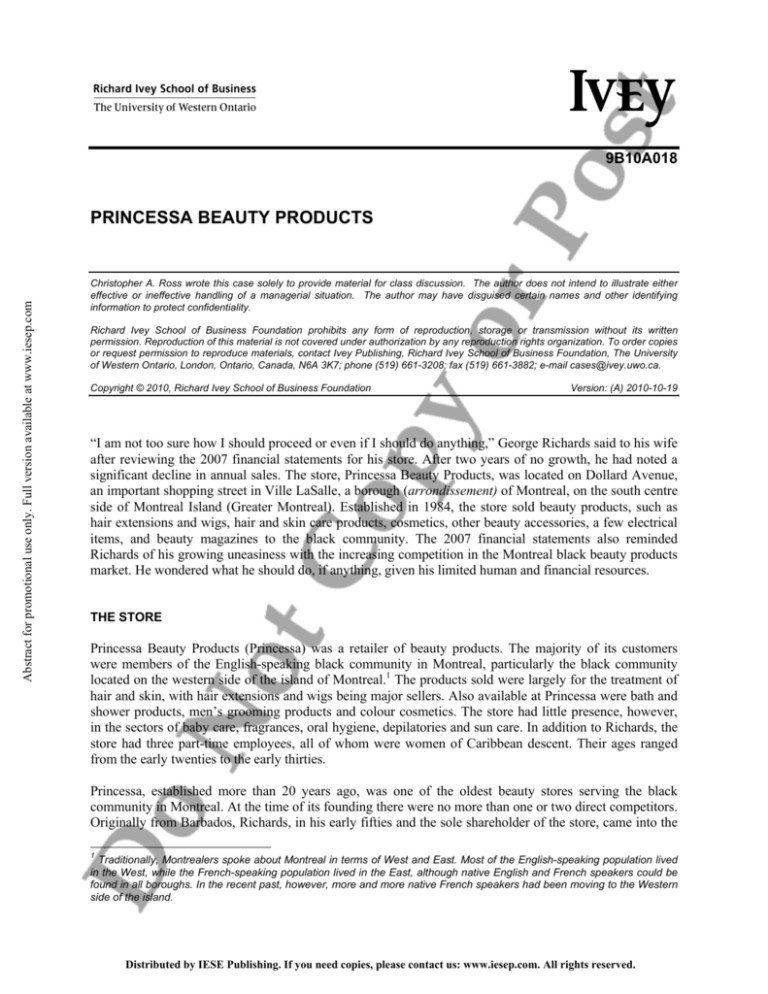
S
w
9B10A018
Abstract for promotional use only. Full version available at www.iesep.com
PRINCESSA BEAUTY PRODUCTS
Christopher A. Ross wrote this case solely to provide material for class discussion. The author does not intend to illustrate either
effective or ineffective handling of a managerial situation. The author may have disguised certain names and other identifying
information to protect confidentiality.
Richard Ivey School of Business Foundation prohibits any form of reproduction, storage or transmission without its written
permission. Reproduction of this material is not covered under authorization by any reproduction rights organization. To order copies
or request permission to reproduce materials, contact Ivey Publishing, Richard Ivey School of Business Foundation, The University
of Western Ontario, London, Ontario, Canada, N6A 3K7; phone (519) 661-3208; fax (519) 661-3882; e-mail cases@ivey.uwo.ca.
Copyright © 2010, Richard Ivey School of Business Foundation
Version: (A) 2010-10-19
“I am not too sure how I should proceed or even if I should do anything,” George Richards said to his wife
after reviewing the 2007 financial statements for his store. After two years of no growth, he had noted a
significant decline in annual sales. The store, Princessa Beauty Products, was located on Dollard Avenue,
an important shopping street in Ville LaSalle, a borough (arrondissement) of Montreal, on the south centre
side of Montreal Island (Greater Montreal). Established in 1984, the store sold beauty products, such as
hair extensions and wigs, hair and skin care products, cosmetics, other beauty accessories, a few electrical
items, and beauty magazines to the black community. The 2007 financial statements also reminded
Richards of his growing uneasiness with the increasing competition in the Montreal black beauty products
market. He wondered what he should do, if anything, given his limited human and financial resources.
THE STORE
Princessa Beauty Products (Princessa) was a retailer of beauty products. The majority of its customers
were members of the English-speaking black community in Montreal, particularly the black community
located on the western side of the island of Montreal.1 The products sold were largely for the treatment of
hair and skin, with hair extensions and wigs being major sellers. Also available at Princessa were bath and
shower products, men’s grooming products and colour cosmetics. The store had little presence, however,
in the sectors of baby care, fragrances, oral hygiene, depilatories and sun care. In addition to Richards, the
store had three part-time employees, all of whom were women of Caribbean descent. Their ages ranged
from the early twenties to the early thirties.
Princessa, established more than 20 years ago, was one of the oldest beauty stores serving the black
community in Montreal. At the time of its founding there were no more than one or two direct competitors.
Originally from Barbados, Richards, in his early fifties and the sole shareholder of the store, came into the
1
Traditionally, Montrealers spoke about Montreal in terms of West and East. Most of the English-speaking population lived
in the West, while the French-speaking population lived in the East, although native English and French speakers could be
found in all boroughs. In the recent past, however, more and more native French speakers had been moving to the Western
side of the island.
Distributed by IESE Publishing. If you need copies, please contact us: www.iesep.com. All rights reserved.
Page 2
9B10A018
business almost by accident. He had recently resigned from his former job when he was approached to
manage Princessa, which was floundering at the time. Richards managed the store for a period of two years
and then, using his life savings, purchased the business from the original owners.
Abstract for promotional use only. Full version available at www.iesep.com
At the time of the purchase, Richards had no prior experience running a business but did have experience
working in the accounting department of an aluminum company that specialized in making sidings for
houses. In fact, he had supervised the payroll and payables department. “I used to travel all over Canada,
installing PCs in the different branches,” Richards said. He had taken accounting courses at university but
had not finished his degree. “School is not for me,” he said.
Before working at Princess, Richards had no experience in the beauty industry: all that he knew about the
business, he learnt while working to make it succeed. Using hair as an example, he explained the need for
special beauty products for the black community: “Because of the curly hair of blacks, the oils need a
longer time to get around the curls, to get to the tips of the hair. We therefore need special shampoos,
colours and hair treatment for blacks. We also need special treatments for the skin of blacks. There is a
whole different set of techniques and skills required in making blacks beautiful.” Princessa carried all that
was needed.
The store was located in a strip mall where there were a number of retail outlets including a variety store, a
hair-dressing salon that catered to a black clientele, restaurants and a pizza shop. The store was
approximately 1,100 square feet in size and was well appointed. Richards was very proud of his store.
Each day at closing time, he made sure that the tiled floor was mopped and cleaned, ready for opening the
following day. In winter, he mopped frequently during the day. The products were well laid out on modern,
mobile shelving resting on the floor of the store, while the hair extensions, wigs and accessories were
displayed on the walls of the store (see Exhibit 1). Recently, he had repainted the store and modernized the
signage at the front. Richards had access to the basement of the store, which he used as a storage area.
STORE SALES
Richards was concerned about the recent sluggishness of annual store sales. Between 2002 and 2006, sales
grew from $453,156 to $605,249. Between 2005 and 2006, however, annual sales were more or less the
same, $602,751 versus $605,249, and in 2007, sales fell to $509,000, a decline of $96,249. For the period
2002 to 2007, gross profit was quite variable and net profit fell from $57,573 to $38,194. If no action was
taken, indications were that sales in 2008 would be lower than in 2007 (see Exhibit 2). In addition,
Richards had recently received notice of a 15 per cent increase in prices from one of his major suppliers of
hair extensions and wigs. According to the supplier, the principal reason for this increase was the shortage
of human hair supplies from China and India, and the rise in raw material and transportation costs.
THE INDUSTRY2
Up to the end of 2007, most of the reports on the Canadian economy were quite positive. For the country
as a whole, unemployment was the lowest for some time and the lowest for women in the past 30 years. In
addition, the real estate market had shown robust growth and consumer confidence remained strong. In
early 2008, however, things began to change. Because of problems with the U.S. economy, economists
began discussing the possibility of Canada sliding into a recession. The price of oil was at an all-time high
2
Much of this industry information was adopted from Euromonitor International’s sector and subsector reports on the
Canadian Cosmetics and Toiletries Industry, 2008.
Distributed by IESE Publishing. If you need copies, please contact us: www.iesep.com. All rights reserved.
Page 3
9B10A018
and Richards felt that this would have a negative effect on the cost of most of the basic necessities that
people bought. As a result, consumers would have less money left over from their disposable income for
the purchase of beauty supplies. Already, he was feeling the effects of increasing costs when one of his
major suppliers increased the prices of hair products. But he also noted other trends as he contemplated
what he should do.
Abstract for promotional use only. Full version available at www.iesep.com
Canada’s population was aging. In 2007, about 13 per cent of the population was more than 65 years old
but many of these people were quite healthy and wanted to preserve their youthful look. In addition, it was
reported that, as a preventive measure, baby boomers were beginning to use anti-aging products even
earlier than usual. In 2007, for example, anti-aging beauty care products showed a strong seven per cent
growth. Natural products were also gaining in popularity.
Richards had noted the success of Pharmaprix (Shoppers Drug Mart outside Quebec), one of the more
popular destinations for the purchase of beauty products. He was aware that its success was due to the instore beauty boutiques and the availability of self-service beauty counters and beauty consultants in the
different outlets. Pharmaprix also had a large selection of prestige, designer and mass brands. But while
drugstores as a whole were the leading distribution channel for beauty products (Jean Coutu was also a
major player), supermarkets and department stores were also important (see Exhibit 3). Richards had also
just heard that Sephora, a chain of specialized beauty stores, after being successful in its initial entry into
Canada, was setting up a store in Fairview Shopping Centre, a major mall on the west of Montreal Island.
He was, however, not sure to what extent this new entrant would affect his black customers. Richards was
also not sure whether general Canadian industry information was applicable to black customers in
Montreal. He had noted that the major retail pharmacies had begun to stock beauty products that were
targeted at blacks, but that their offerings were still limited.
The toiletries and cosmetics industry was categorized into different sectors. These sectors included baby
care, bath and shower products, deodorants, hair care, colour cosmetics, men’s grooming products, oral
hygiene, fragrances, skin care, depilatories and sun care. The performance of these various sectors from
2002 to 2007 for all of Canada is shown in Exhibit 4. While he felt that it was important to keep an eye on
what was going on in the industry as a whole, Richards did not stock products from all the sectors.
Princessa did not carry deodorants, depilatories, oral hygiene or sun care products. In the baby care sector,
hair care products were carried. The store carried a few bath and shower products such as bars of antibacterial and exfoliating soap. Colour cosmetics, including brands like Nacara and Iman, accounted for
five per cent of Princessa’s sales. There was a limited supply of men grooming products such as post-shave
creams, skin care products, and electric hair clippers. A single line of fragrance was not moving. Major
sellers were hair (extensions and wigs), accounting for just more than 50 per cent of sales, hair care
products, accounting for 30 per cent of sales, and skin care, accounting for eight per cent of sales.
In spite of this industry data, Richards wondered to what extent they were applicable to his market. For
example, he had read about the growth of men’s grooming products but in his store he had not noticed any
increase in demand for this sector of beauty products. In addition, he felt that he was not in a position to
hire beauty experts or beauticians, the way the pharmacies did, and as a result he did not think that he could
provide good service for the sectors of fragrances or colour cosmetics, for example. Finally, in the skin
care sector, the needs of blacks were very special.
Richards noted that the hair care sector reports did not seem to discuss wigs and hair extensions, the most
popular sellers in his store. Princessa sold many different types of wigs for both short and long hair.
Distributed by IESE Publishing. If you need copies, please contact us: www.iesep.com. All rights reserved.
Page 4
9B10A018
Princessa also sold, in synthetic or human hair, braids, hair pieces and weaves in many different styles,
lengths and colours.
Abstract for promotional use only. Full version available at www.iesep.com
CUSTOMERS
Ninety-five per cent of Princessa’s customers were women from the black community. Ninety per cent
earned less than $45,000 annually and about half of these earned less than $25,000 annually. Richards, a
keen observer of his customers, had also noted that approximately 80 per cent of his customers were
between 15 and 50 years old and that about half of these were in their thirties. Fifty-six per cent lived in La
Salle, the borough in which Princessa was located, and approximately nine per cent lived in the nearby
borough of Côte-des-Neiges-Notre-Dame-de-Grâce (CDN/NDG). The remainder of his customers
originated from adjacent and nearby areas such as Sud-Quest, Verdun, Lachine, Dollard-des-Ormeaux and
Pierrefonds, along with Chateauguay and Longueuil, two off-island communities that were a relatively
short distance from the store. Thus, the majority of the customers were located relatively nearby and did
not have very large incomes. According to Statistics Canada, in 2005 average incomes among women 15
years old and over in LaSalle and Lachine were $26,474 and $28,620, respectively, and in CDN/NDG the
average income was $25,767. For the west island cities, average incomes for women more than 15 years
old were larger (see Exhibit 5). Richards had also read that per capita spending on personal care products
in Montreal averaged about $350 per annum. He had observed too that in the last few years, more and
more whites, especially younger francophone women, were visiting his store to buy wigs and hair
extensions. While he was not comfortable serving clients in French, he often wondered about the
possibility of pursuing growth in the white community. All of his store clerks were bilingual, but he was
sometimes alone in the store, especially in the mornings.
Richards, who had taken some marketing courses, was well aware of the phrase “we sell hope” in reference
to beauty products. He was of the opinion, however, that it was necessary to broaden the definition of his
offering. He felt that the products sold in his store, as well as in other beauty products stores, were
designed to make buyers look good and that by looking good, buyers also felt good about themselves. The
desire to be beautiful was driven by the desire to be admired, to have a sense of pride, and to be accepted
by co-workers, friends, and family.
Richards maintained good relations with his customers and remarked that very few of them ever
complained about his service. In general, his customers were satisfied with the selection and prices of
products. He was also confident that his store was one of the best organized, most well maintained, and
most professional of the black retailers in Montreal.
For customers, the most important sources of information about beauty products were friends, family
members, magazines and personnel in the store. The customers’ beauticians were also important. Richards
had concluded that word of mouth was extremely important among the customers of Princessa but that
taking advantage of this was difficult. He concluded that given the state of his finances he was in no
position to advertise in glossy magazines, on TV, or in the large provincial dailies such as the Gazette, the
major English-language newspaper in Montreal. In any event, he thought that using the Gazette would be a
waste of resources since so many of his customers came from a relatively limited area. For example, very
few of his customers originated from places in the east of Montreal, such as Montreal-Nord or Rivière-desPrairies, even if there were large concentrations of blacks in those areas.
Richards was well known in the black community and many of his customers were regulars. He knew
many of them by name. Because his products were so personal, few customers bought them as gifts.
Distributed by IESE Publishing. If you need copies, please contact us: www.iesep.com. All rights reserved.




